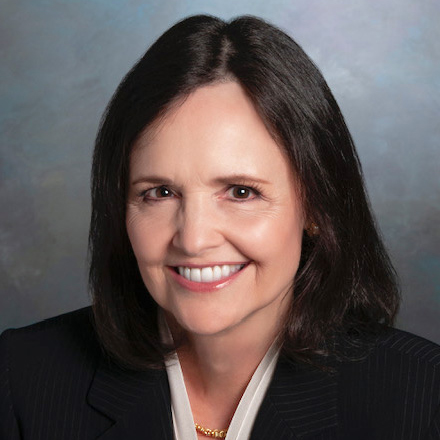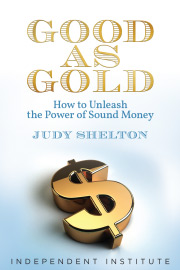The backlash against free trade that has come bubbling to the surface under the pressure of presidential campaigning is fueled by long-simmering resentment. Why is China allowed to devalue its currency against the dollar? How is it fair to American workers to have to compete against goods that can be rendered cheaper simply through the monetary debasement tactics undertaken by the government of a trade rival?
The answer: It isn’t. When the price of goods offered in the global market can be slashed as the result of currency manipulation rather than having more competent workers or achieving greater production efficiencies, it’s not only unfair—it’s an affront to the principles of free market and free trade.
Both Republicans and Democrats have come to recognize this widening fissure between America’s traditional belief in the benefits of competition in an open global marketplace and what is now perceived as a rigged system that tilts the playing field in favor of currency manipulators. “Countries like China that cheat and don’t play by the rules hurt good paying American jobs,” says Representative Debbie Dingell, a Democrat whose district at Michigan is heavily-oriented to the auto industry.
Senator Portman, a Republican of Ohio, similarly inveighs against China’s devaluation of the yuan as “another harsh reminder that we cannot afford to sit idly by as China refuses to play by the rules.” China is not the only country being targeted as a currency manipulator; Japan and Mexico are also included among those nations that are, in the words of presidential hopeful Donald Trump, “robbing Americans of billions of dollars of capital and millions of jobs.”
Even as Mr. Trump has intuitively grasped the essence of American bitterness, particularly in the Rust Belt, his rush to embrace retaliatory tariffs as a solution is misplaced. In aligning his agenda with those who demand that nations be required to “play by the rules” rather than be allowed to manipulate exchange rates, Mr. Trump will sooner or later have to confront the reality: There are no rules.
The fact is that since the collapse in 1971 of the post-war system known as Bretton Woods, the world has had no rules-based international monetary system for ensuring that the cause of free trade would not be undermined by currency manipulation. When delegates from 44 nations allied against Nazi Germany met in Bretton Woods, New Hampshire—their conference began three weeks after D-Day—it was precisely to hammer out an agreement for maintaining stable exchange rates to facilitate trade and capital flows in the postwar future.
Ground rules were fairly straightforward. “Beggar-thy-neighbor” currency devaluations of the sort that helped bring about a worldwide economic depression in the 1930s would not be allowed. Participating nations agreed to fix their currencies to the American dollar, and the dollar was fixed to gold. Stable money would ensure a level playing field for trade in goods and services; it would allow investment capital to flow to its most productive use, and it would help avoid financial instability and capital flight.
These are precisely the goals we should be pursuing today. Our global monetary disorder is not only a feeding ground for unfair trade practices. It also threatens the growth by undermining the very rationale for trading with other nations.
“What can an exchange rate really mean in terms of everything a textbook teaches about rational economic decision making, when it changes by 30% or more in the space of 12 months only to reverse itself?” observes Paul Volcker in his book “Changing Fortunes,” co-written with a former Japanese finance official, Toyoo Gyohten. “What kind of signals does that send about where a businessman should intelligently invest his capital for long-term profitability?”
Adds Mr. Volcker: “In the grand scheme of economic life first described by Adam Smith, in which nations like individuals should concentrate on the things they do best, how can anyone decide which country produces what most efficiently when the prices change so fast? The answer, to me, must be that such large swings are a symptom of a system in disarray.”
Things have grown only worse in recent years as increased volatility, persistent imbalances, disorderly capital movements and currency misalignments have plagued global economic growth. Jacques de Larosiere, former managing director of the International Monetary Fund, describes our current monetary arrangements as something far worse than a non-system: They amount to an “anti-system.”
These days central banks have the power to shift exchange rates by merely announcing their interest-rate intentions, which further complicates the already-tricky issue of defining whether a nation is guilty of currency manipulation. The Treasury Department’s most recent semiannual report examines the currency practices of China, Japan and Mexico—and concludes that “no major trading partner of the United States met the standard of manipulating the rate of exchange between its currency and the United States dollar for purposes of preventing effective balance of payments adjustments or gaining unfair competitive advantage in international trade.”
Some will insist that we obviously need new criteria so that America can begin to punish its trade partners. But maybe those who aspire to become America’s next president should be thinking on a grander scale than retaliatory tariffs and protectionist actions that risk further damage to global economic growth.
“We need a new Bretton Woods,” stated Robert Bartley, the editor of the Wall Street Journal, wrote in 1984. “We have to fix what broke.” Mr. Bartley believed that nothing could help the world economy more than restoring a workable international monetary regime. It has taken far too long to recognize he was right. Genuine free trade requires a sound monetary foundation. It’s time to start thinking about a rules-based system, perhaps tied to gold once again, if we are to stabilize exchange rates and preserve America’s commitment to free trade. The rationality and resolve behind Bretton Woods should provide inspiration to our nation’s next president.









